Description
The Villains Have Arrived!
Demon Cults & Secret Societies brings 13 nefarious organizations to your tabletop game, each with its own sinister agenda. Their plots range from the conquest of nations to daring heists of the greatest of treasures, from redefining the nature of truth to extinguishing the sun itself!
Compatible with the 5th Edition of the world’s first roleplaying game, this 176-page volume contains:
- 13 deadly cults and secret societies, including the Burning Rune, the Chosen of the Demon Bat, and the Creed of All Flesh
- Each cult’s beliefs and agenda, with complete stats for their top leaders—most in a diverse range of levels, to reflect masterminds and lieutenants
- Acolytes, soldiers, and minions to oppose PCs of many levels
- Adventure seeds with cultist plots and schemes, ranging from low-level skirmishes to epic, career-capping challenges
- New cult-related artifacts, spells, magic items, feats, monsters, vehicles, and more!
Great campaigns need worthy villains. Discover conspiracies, plots, and mayhem to thrill and entertain your players for years!

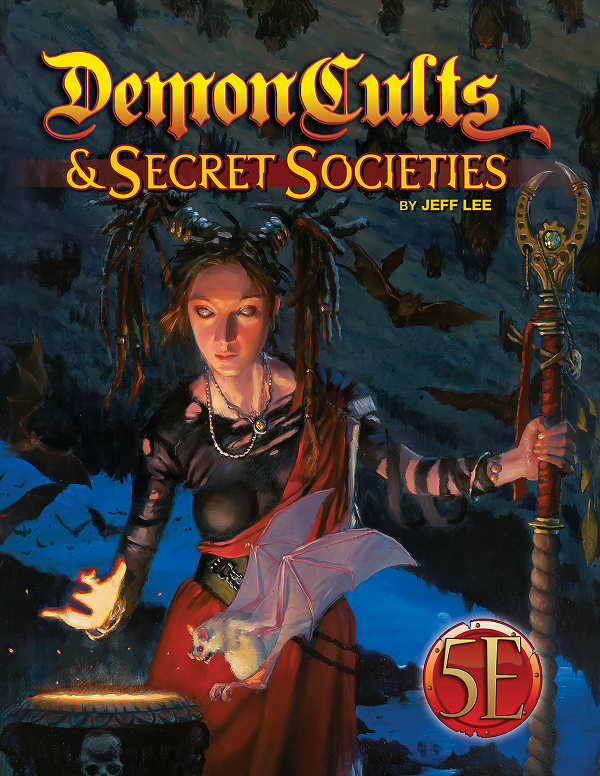

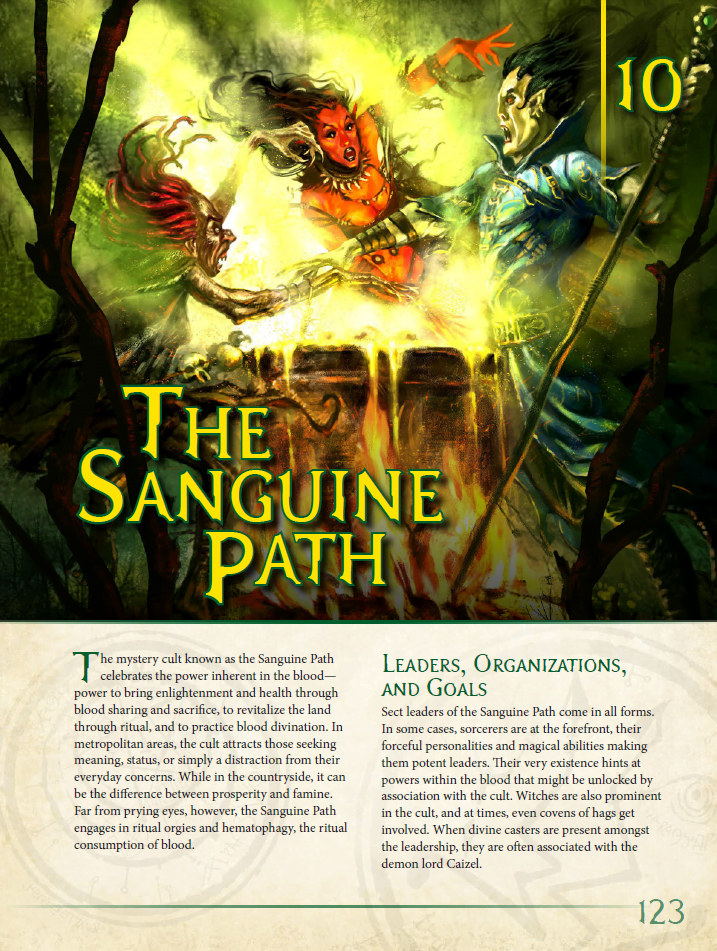
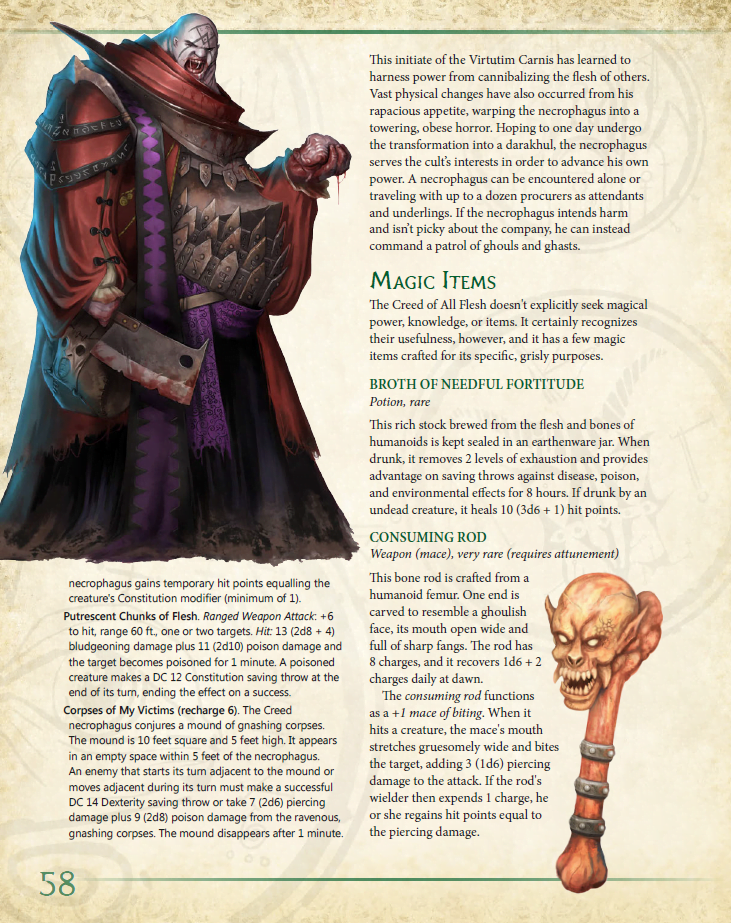
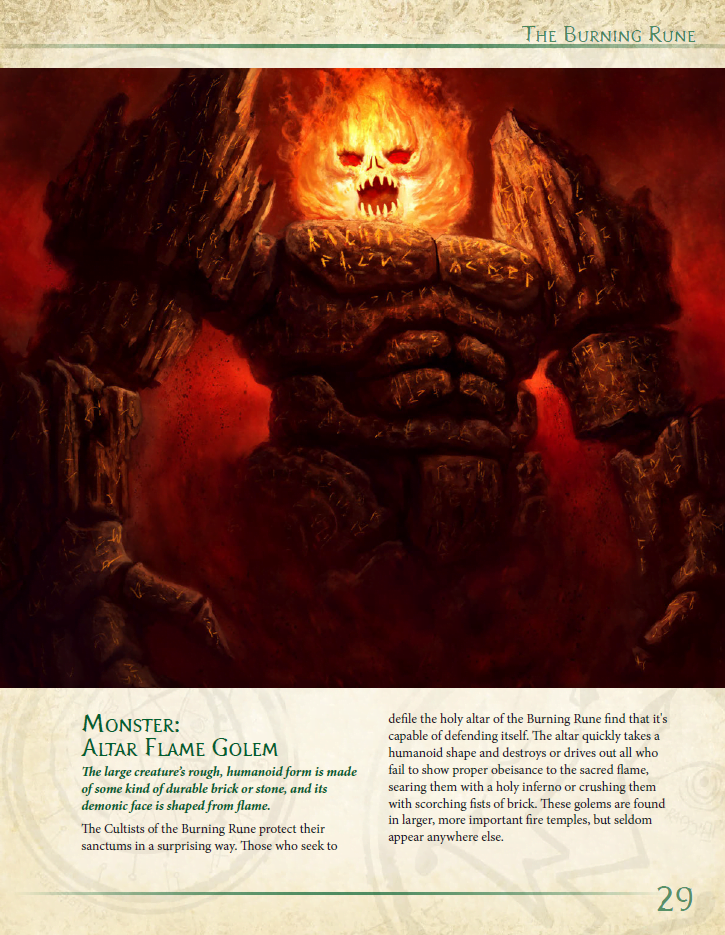

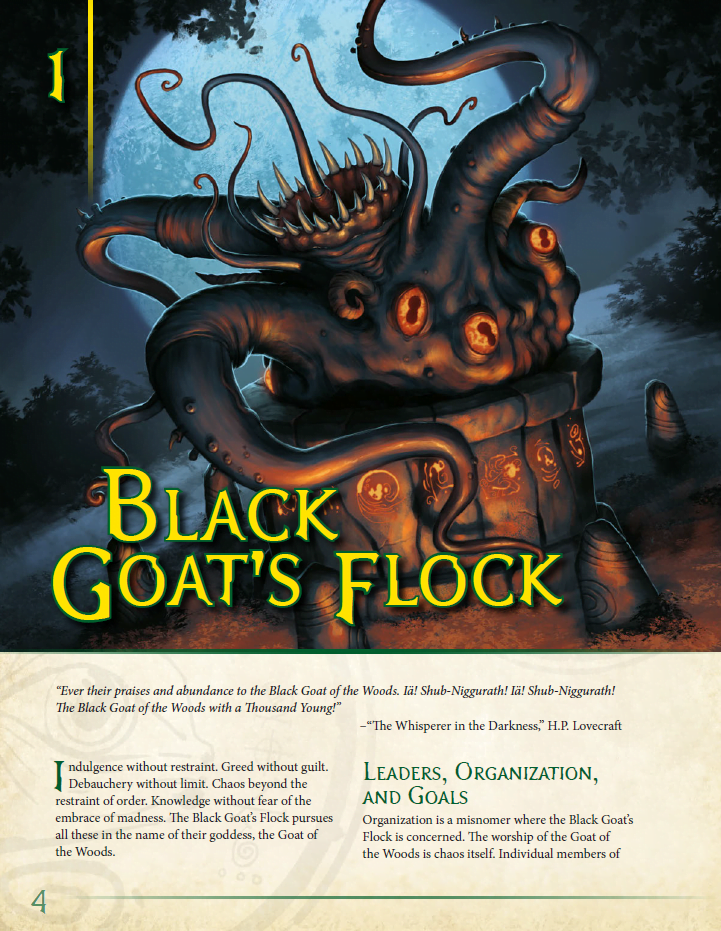
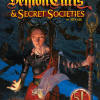
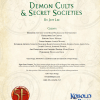
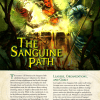
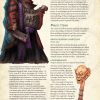
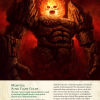
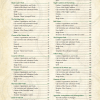
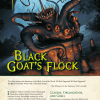
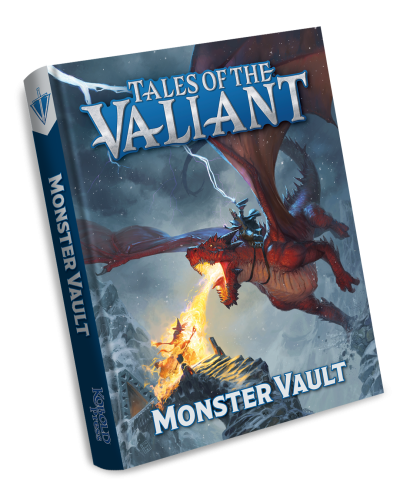
Thilo Graf –
An Endzeitgeist.com review
The 5e-version of this massive tome clocks in at 178 pages, 1 page front cover, 1 page editorial, 1 page ToC, 1 page SRD, 2 pages of advertisement, 1 page back cover, leaving us with 171 pages of content, so let’s take a look!
First things first: This book references, in some instances, the phenomenal Tome of Beasts. If you don’t have that book, I’d suggest getting it right now. The book also references three installments of the Deep Magic-series: Rune Magic (worth getting), Void Magic (excellent) and Blood & Doom (skip that one). While the book remains functional as a whole sans these other files, the experience is enhanced with them.
Okay, so I’ll actually start the review of this book by covering the final chapter first – in it, we discuss the concept of antipaladins in the context of 5e, represented by two antipaladin oaths. It should be noted that the tweak of the base class chassis as presented in the problematic Deep Magic: Blood and Doom, has not been reproduced herein. The first of the oaths presented here would be the Oath of the Crawling Beyond, which makes copious use of the spells introduced in the excellent Deep Magic: Void Magic file. The channel divinity option of this oath allows you to channel the cold starlight of the void. This only has a range f 10 ft., but on a failed Con-save, the target can’t talk for 1 minute, with saves on subsequent rounds allowing for saves to shake this off. Problematic: While creatures affected can negate this one, they can’t negate the secondary effect, which nets disadvantage on both Dexterity-based and concentration checks until the target completes a long rest. Pretty sure that should be negated on a successful save. The second channel divinity-based option gained here is the void-spun syllable, which forces all creatures within 30 feet to complete your void-syllable into a word, causing your Charisma modifier times d6 psychic damage and stunning the targets until the end of their turn. The verbiage here is slightly odd, as it almost looks like the targets need to complete the syllable on their turn. Upon reaching 5th level, the character gains the Marked feature, which grows tentacles somewhere that increase passive Perception by 2 and provide advantage on Perception checks. 7th level adds blinding to the already strong cold starlight – does it affect those that make the save? No idea. 13th level increases the range to 20 ft. and nets you 10 temporary hit points per target affected, up to a maximum of 20. 15th level nets a damage-increase for void-spun syllables and nets you domination over the targets, with concentration to maintain. The capstone nets you the option to use your action to transform into a horrid beast once per long rest interval, with +2 AC and a size increase, as well as advantage on all attack rolls and successful attacks being treated as critical hits. Creatures witnessing the transformation must save of fall unconscious.
The second oath presented would be the infernal oath, which also introduces two channel divinity options at 3rd level. The first would be the abyssal fires, which inflicts Charisma modifier times 1d8 fire damage to up to 3 creatures – odd: No sight-caveat here. Anyways, creatures that take damage (if they fail their Dex-save) are also charmed for 1 minute, with saves on the end of subsequent turns to shake it off. This also nets you a bonus to atk, ability- and skill-checks and saves equal to the number of creatures charmed with this ability. I am pretty sure that this should have an anti-nova-caveat: RAW, using this feature multiple times could be read as the bonus stacking. The second channel divinity option would be Sow Doubt, which targets 1 creature that can hear you. The target must succeed a Wisdom-save or be unable to take actions or abilities or spell to aid allies for Charisma modifier rounds. Okay, does that include effects that are already in place and require concentration to maintain? Upon reaching 5th level, the character becomes immune to fire damage and gains half the damage you would take as temporary hitpoints, up to a maximum of 10. This would be an infinite temporary hit point shield. Or so the ability would work in theory. The following sentence is right after stating immunity to fire damage: “Additionally, you gain temporary hit points equal to half the amount of fire damage dealt to you, up to a maximum of 10 hit points.” You’re immune. You don’t take fire damage. Thus, you don’t get temporary hit points. Ever. There’s a very important word missing here, namely “would.” 7th level upgrades abyssal fires to target up to 7 targets. At 15th level, sow doubt can apply to up to three creatures. Additionally, half of any damage inflicted to you is divided equally to the affected creatures as fire damage, which can be brutal. The capstone lets you use your action to conjure a 50-ft. column of green fire around you. The pushes targets up to 20 ft. away and deafens them on a failed save. Creatures within 5 ft. of you also take Charisma modifier times 1d10 fire damage on a failed save. You can also have the column topple over sans action, generating a 20-ft.-radius of 4d10 (average damage value included, oddly) fire damage and be grappled by the remains of the fire pillar until the end of the next turn. The chapter also contains 3 new spells, two of which are first level spells: Delay passing temporarily holds a recently slain target’s spirit back for interrogation. Feed the worms targets a creature dropped to 0 hp, which, on a failed Con-save, is instantly consumed and transformed into a swarm of insects. The third spell is the 4th-level wield soul, which is rather potent, as it allows you to tap into a dead creature’s spells or innate spellcasting abilities, choosing one, which you may then cast once as a bonus action. This should have a caveat regarding maximum spell-levels.
Okay, this concludes the antipaladin appendix of sorts, so let’s dive into the respective cults, shall we? Now, organization-wise, each of the cults comes with detailed write-up of its basics regarding organization and goals and the respective leaders are depicted as fully realized NPCs, often with gorgeous artworks. Beyond the named NPC movers and shakers, each of the cult-write ups also features stats for rank and file members of the cult, monsters, if applicable, as well as supplemental material, which depends on the respective cult, but generally represents crunchy bits. Now, as these rules-relevant supplemental materials are clearly intended for use by the antagonists of the PCs, I will judge them as such. Now, if I were to just list each individual statblock herein, we’d bloat this review beyond any immediate usefulness, so I’m taking the broad view here. It should also be mentioned that each of the cults comes with a suggested campaign/adventure-sequence outline of sorts, allowing you to plan the involvement of the cult as appropriate to the level of your party. These outlines deserve special mention, as they’re often rather creative and interesting – and they make the GM’s job easier, so kudos there. It should be noted, though, that these are OUTLINES, not fully realized encounters or campaign plots – they are a suggested skeleton of a plot that you can weave into your game.
It should be noted that the presentation of the cults does not come with backgrounds or the like, as the cults are intended as antagonistic organizations and not as cults for the PCs to join. Fans of Midgard will appreciate the tie-ins of lore for the respective cult entries to the lore of the evocative setting, and, indeed, while the cults can be used in pretty much every setting, they benefit greatly from the tie-ins with Kobold Press’ cult fantasy setting. That being said, some of the cults with deeper ties to Midgard instead come with notes to use them in other settings, which will be appreciated by quite a few readers.
All right, got that? As the following pertains some SPOILERS regarding the nature of the cults in question and their themes and arsenals, I strongly suggest that players should jump ahead to the conclusion.
…
..
.
All right, only GMs around? Great! The first cult would be a classic of sorts for many gamers – the Black Goat’s Flock is classic Cthulhiana, depicting a cult of good ole’ Shub-Niggurath, as seen through the lens of Midgard’s brand of dark fantasy: the cult attempts to reassemble the Veridian Codex, an attempt codified, rules-wise, the fully statted spellbook of one of the movers and shakers of the cult. The cult comes with 3 spells, the first of which would be the curse of formless shape (6th level, druid, wizard), which makes you amorphous and socially not acceptable, nets resistance to slashing and piercing damage and prevents holding items etc.; Morphic flux is a high-level (7th) buff that fortifies against crits etc., grants resistance to piercing and slashing and nets you a bonus action additional unarmed attack, the physical damage type of which you may freely choose. Selfish wish (9th level, sorc and wiz)is basically an evil wish variant that is twisted – something that many a campaign does with regular wishes, but oh well. The cult also gets three decent, if unspectacular items – a defensive cloak and a gore-attack granting mask that also sports a 1/day confusion gaze with a range of 30 ft. The third item would be the maddening Valcrist folio, which nets access to the mind-bending options of Deep Magic: Void Magic, one of my favorites from that series. The spells referenced are NOT reproduced herein. The new monster would be the challenge 9 flame-scourged scion, basically a fire-scorched dark young. The most interesting component here would be two of the three leaders, an androgynous fey from beyond the stars and a super-potent goblin cleric. The third is the man that lent his name to the aforementioned folio.
The next cult would be the first of an array of cults that depict a heresy of an established religion, which may require a bit more fiddling when using non-Midgardian campaigns; here we learn about a heresy of the god Baal-Hotep, deity of dragons and fire. The burning rune cult is led by one Ust-Ziyad, a potent challenge 10 Wisdom-based caster that makes use of the rules presented in Deep Magic: Rune Magic, i.e., he makes use of Midgard’s rune magic. We also get stats for a named phlogiston faerie. The most interesting components here would be the Altar Flame Golem at challenge 10, the new brenna-Þurfa rune and the ability to create timed scorch-bombs, which allows the GM to create some nasty death traps and evoke, through a fantasy lens, some modern anxieties pertaining our own safety in an age of globalized threats and urban guerilla warfare. Minor complaint: The rune bombs in 5e are pretty tame, as they require attunement by a master of the kaunen-rune, limiting how many of them you can potentially place. Personally, I think this makes the cult more tame than it should be and is a pretty crippling downside to it. Pathfinder executed that one better.
While we’re on the topic of heresies, let’s talk about the other cults that can be roughly summarized under this moniker. The first of these would be the Night Cauldron of Chernobog, which, when summed up, can be thought of as radical adherents to darkness, with the ultimate goal of bringing the eternal night. With winter hags and a potent alchemist at the top of their food chain, their methodology does differ significantly from e.g. the burning rune – something that also holds true for the third heresy in the book, but I’m getting ahead of myself. The rank and file members also deserve special mention here, making interesting use of derro, dark folk, etc. As far as supplemental material is concerned, we get a poison that causes both blindness and hamper rests and one that not only poisons for 8 hours, it also seeps away Strength. The spells make use of the Tome of Beasts, spawning a shadow beast from a slain target (6th level, cleric, sorc, wiz) and there is a 9th-level ritual for sorc and wiz that can yield permanent boons…but also result in e.g. vulnerability, if not performed properly.
The new items include a darkness-causing lamp (Seen those before. Often.) and the bituminous orb, which fortifies against necrotic damage and yields advantage on saves vs. radiant damage. The orb can also fire blinding and grappling rays that can be used to hold targets and crush them. Interesting translation of the item that I rather enjoyed.
The third heresy of sorts would be one that should be familiar to fans of Midgard in PFRPG – Selket’s Sting is introduced, for the first time to 5e here. Now, the thing that sets this heresy apart from the previous ones would be pretty obvious – the cult is presented in a manner, where the PCs may actually be servants of the cult. It adheres to a quasi-Egyptian leitmotif and represents basically a religious secret police that executes those that violate Selket’s divine mandate. Now, I have already covered this cult in my review of the Demon Cults-series installment for PFRPG, originally released as stand-alone pdfs to supplement the massive Southlands book. Since there previously was no 5e-iteration, here is what this one is about:
These fanatics include a challenge 8 dwarven master of explosives (whose bombs, oddly, cause force damage) and we get a gynosphinx, including several sample riddles. Downside: Sans Tome of Beasts, you won’t have stats for her – it would have been nice to see the standard gynosphinx stats modified for her. The daughter of Selkhet is a potent challenge 11 chosen of the god, including a giant scorpion mount/companion. Supplemental material-wise, we get a bracer that can help poison weapons and there is a spell to call forth a manabane swarm (stats not included). Oh, and the spell fails to specify for which classes it should be made available. A lost chance would be that, in PFRPG, the “serve the cult”-angle was further developed – in 5e, a background would be appropriate here. (As an aside, a general ex-cultist background would have suited the book rather well.)
So what are the doomspeakers? Are they the homeless persons with the “The end is nigh”-shields? Nope, and neither are they doom metal enthusiasts – in this context, the doomspeakers are the antipaladin champions that have drank deeply from the well of profanity that is the Book of Nine Dooms, chaotic demon-worshippers, one and all. If you’re tired by moral conundrums, these guys fit the bill – it doesn’t get more evil. These are guys that do not even try to seem morally ambiguous – we have capital E level, vile demon worshippers here and their methods and ideology reflect that. Now, unlike the first installment, we receive a bunch of statblocks, not one – from Narn, a straight challenge 10 evil (anti-)paladin dude (also known for crucifying captured enemies and minions) to a savage challenge 7 gnoll (anti-)paladin, the first two builds are nasty pieces. A somewhat tragic tiefling caster (challenge 9) is a more diverse character – severely mutilated by ignorant townsfolk, her descent into utter darkness was traumatic indeed. A challenge 8 gnoll veteran and an evil bardic type (challenge 6) complement this section. The new magic items here include a bone whip that may temporarily reduce maximum hp 1/day. Primal dooms are basically fiends in a bauble – not a big fan there. The section includes a new spell, the 5th level doom of ancient decreptitude, which is frickin’ OP: 2 levels of exhaustion upon casting, then 1 on subsequent rounds. Considering how fast exhaustion can kill you in 5e, this won’t fly, not even as an enemy-only spell. Sure, it’s a doom-spell and as such affects the caster as well, but yeah. Not a fan. The spell does not specify which classes should be able to cast it.
Next up would be the Emerald Order, a cabal of wizards that serve Thoth-Hermes and deciphered the secrets within the Emerald Tablets, the members have managed to attain increased magical prowess – alas, as per the truism, power corrupts and the Emerald Order, in the time-honored tradition of secret societies, is exerting significant influence of the bodies politic in the realms wherein they have established themselves. Guided in that endeavor are they by their fully statted leader Dromdal-Re, who is one badass challenge 13 caster. The section includes the emerald shard ioun stone that can absorb 5 damage from all incoming attacks, burning out at 120 points. The cult also sports the rules for the potent artifact Emerald Tablets of Thoth-Hermes, which are presented in a rather cool manner. The chapter also provides the stats for the challenge 12 smaragdine golems. In PFRPG, this cult came with a prestige class, and personally, I think that an arcane tradition to reflect the specific tradition would have been nice to see.
The Hand of Nakresh is named for forty-fingered simian demon-god of thieves, with his lower left hand reserved for his most daring of thefts – it is this hand that gives this cult its name. The leadership of the cult is firmly in the hands of the Five Exalted, which receive full-blown statblocks herein – a kobold bomber (challenge 11), a gnoll warrior with a hyenado companion (challenge 8), a derro arcanist (challenge 12), an albino tengu cleric-like caster (challenge 9) and a roach-like (challenge 10) killer make up this illustrious party, which could pretty much be run as an opposing adventurer party, a rival group, should you choose to. There is a new spell herein, a 4th-level variant of mirror image, wherein the duplicates run in random directions if you move – I do like the concept and the spell is functional, but I would have liked to see interaction with damaging terrain – do the images running over such terrain ignore it? I assume so, but this conversely makes finding the true culprit easier. The spell also allows for the changing of positions once per casting. The magic items included feature a monkey’s paw that can provide charge-based rerolls at +10 (feels a bit odd in 5e) and a clockwork siege crab-vehicle, which is pretty damn cool.
The Servants of the White Ape would be a cult that breathes the spirit of sword and sorcery: A disenfranchised aristocrat had to escape into the jungles and stumbled upon a hidden, ruined city, Josef Kranz would have not dreamed that the carnivorous white apes haunting the ruins would one day bow to him – and bow they do, for he is the summoner that commands the Great White Ape, what in PFRPG was his eidolon. In 5e, we get a relatively smooth transition of the entity being akin to their tribal deity. Over years of study and careful planning, the mad master, now known as the New Father, has commanded the white apes in combat, subjugating all that dare oppose him and his simian slaves. Kranz and his powerful avatar of the White Ape receive statblocks (though annoyingly, you have to puzzle together the stats of the standard giant ape and that of the avatar). His simian warriors also receive stats, but that’s not all – the awakened apes spread a dreaded condition, the spellscourge, which not only renders those infected into primal, degenerate and evil undead savages, but also allows them to devour magic. Yes, this pretty much could have been drawn from the pen of Rider Haggard or similar authors. The father’s staff wielded by Kranz, makes for a potent staff and we get magic item stats for white ape hide, which is potent armor that has several abilities that can be activated sans action.
There are quite a few new cults beyond these, which had so far not been released for another system: There are those, for example the Chosen of the Demon Bat, who represent, at least at first glance, the servants of Camazotz.
Led by a derro variant vampire (you’ll have to puzzle together the stats here with the MM) with explosive concoctions and a darkness-themed, with a fungus-armored giant, the cult’s elite is interesting and we even get a unique challenge 16 demon bat, Vespertilo – once a high-ranking servant of Camazotz, the mighty demon has been exiled to the material plane and an unholy alliance with the mi-go! This makes the overall feeling of the cult rather distinct. The mi-go stats are in the Tome of Beasts. The cult gets a new feat, Paincaster, which nets advantage on concentration-related Constitution checks, immunity to charmed and frightened conditions while maintaining concentration and, and when a creature ends your concentration, it suffers from disadvantage to saves versus your spells on your next turn. We also get a new hazard with fungal pods and a variant form of strange spellbook with the ebon shards, which require attunement. The cult also gets a thematically-fitting staff as well as magical lenses and there is a new swarm, a poison that renders you unconscious and a spell that calls forth bats or birds to act as spies. Two vehicles are included, the fungal flyer, which is a horribly mutated, fungified dire bat, and the skittering skiff,w hich may once have been a carrion crawler. I liked this bait and switch approach to a cult that starts as straightforward and adds a complicating twist.
The Creed of All Flesh is tied to the concept of the intelligent darakhul ghouls in Midgard and their subterranean empire…and those mortals that crave the flesh of their brethren. Considering how cool the notion of darakhul is in the first place, it should come as no surprise that I consider the darakhul-themed cult as depicted here to be rather interesting. The leadership of the cult clocks in at challenge 10, 13 and 5, respectively, and the respective features of the NPCs are smart. The execution of the respective campaign-sketch is also pretty damn creepy, so yeah, theme-wise, a resounding success as far as cannibal cults are concerned. With magical broths and jerky, a mace-like rod that can attempt to bite creatures and heal the wielder and a nasty tome, these are nice. I am particularly partial to the lavishly-illustrated ghoulsteed mount-undead. One of my favorites herein.
Speaking of the living dead: As you all probably know by now, the Red Goddess Marena would be one of my favorite deities in Midgard; in the vampire-rules principalities of Morgau and Doresh, her worship is open and serves to justify the vampiric rulers; in essence, they are a sort of anti-Catholic-church, one based on a doctrine of tainted life and suffering as a promise for an elevated existence beyond the shroud of death, though here, it is not in some afterlife, but as a reborn vampire. Combine that with elitism and the notion that the deity has elevated the worthy and we arrive at a nice blend of the, by today’s standards, somewhat disquieting concept of divine providence for rulers and vampiric themes, which have resonated through class discourse throughout the ages. Marena also has covert agents, the blood sisters, who act beyond the confines of the vampire-ruled home-bases of the cult. (As an aside: Evil blood-magic nuns are just badass…and this provides the stats of Sister Alkava, probably known from her own little adventure. We also get a variant vampire whose stats you have to puzzle together once more, the stats for the church’s Grand Inquisitor…and yes, before you ask: Marena is also a goddess of lust. Her servants thus control brothels…The cult also includes two new blood magic spells to add to the arsenal presented by the Deep Magic-series, the sanguine spear, a spear of frozen blood drawn from the dead, and the stigmata of the red goddess, which causes the caster to take damage, but also buffs – the lack of concentration required here makes the spell mechanically interesting. The incantation bloodline strike is amazing…and much to my chagrin, completely absent from the 5e-version, which is puzzling, as it represented perhaps the coolest signature move of the cult. A dagger to exsanguinate and a magic scourge complement the supplemental section. The dagger in 5e regains charges on crits, which may be spent for bonus damage or to heal. Unfortunately, the latter lacks limitations. So while you’ll be going through a ton of rats and kittens to heal yourself with it, you can – a simple type or daily limit caveat would have made this work properly. The monsters associated with the cult include the blood hound and a variant blood zombie.
Whereas the blood sisters are basically an organized orthodoxy that is, theme-wise, in line with organized religions, the sanguine path, the second blood-themed cult within, takes a wholly different route: While the connotations of sexuality and hedonism as well as blood consumption remain, that is mostly due to our cultural associations with blood and sexuality, which are inextricably linked. Anyways, the cult is focused more on a theme of hedonism and oracular power, with sacred prostitutes generating a mythological resonance with e.g. the cult of Ishtar, though such associations, ultimately, should not be taken as an indication that the cult is benevolent. It’s not. Leaders that contain vampires, red hags and blood hags should make that clear. All of the leaders require that you piece together their stats, modifying the base creatures from MM and Tome of Beasts. The bloodwhisper cauldron has been demoted to very rare item that provides some healing, foresight and miasma, but loses the wish ability from the PFRPG-version, making it a less compelling cornerstone item for the cult, and decreasing the incentives to join it. Blood strike allows for the transfer of a spell or affliction to another member of the bloodline – which is cool. Once more, no suggested class provided for the ritual. The creature-section include the Blood-bound template, which grants power, but at the price of withdrawal from the elixir that bestows these powers…
The final cult within this tome would be the weavers of truth, which may be the last cult herein, but certainly not the least: The cult is devoted to Pazuzu and basically acts as a magical think-tank of firebrands and misinformation, with deception-focused seductresses, charlatans and the batlike echo demons (challenge 6) making them a formidable cabal of adversaries that probably will need to be fought less with blades and more with roleplaying. This is in particular represented by the absolutely glorious Incantation of Lies Made Truth, which THANKFULLY has been reproduced as a proper 5e-ritual. It can make for an absolutely mind-boggling twist as, it can turn whole organizations, kingdoms or cities around, rewriting what is considered to be truth. I also absolutely adore the carriage of whispers, a hybrid magic item/vehicle that allows a passenger to influence those it passes – which can make for an amazing showdown, in which the PCs turn from celebrated heroes to outcasts, as a whole city suddenly becomes ever more hostile, but this has VAST potential in my book. This cult is by far the most inspired in the book and I am glad to report that its transition to 5e has been executed rather well.
Conclusion:
Editing and formatting are generally good, though somewhat inconsistent regarding the formatting of creature features. On a rules-level, there are a few questionable components herein, but as a whole, the book can be considered to be solid in that aspect. Layout adheres to Kobold Press’ gorgeous two-column full-color standard and the pdf comes fully bookmarked for your convenience. The pdf contains a ton of really amazing full-color artworks, though fans of Kobold Press may be familiar with some, but by far not all of the pieces. I cannot comment on the physical version of the book, since I do not own it.
Jeff Lee, with additional design by Jon Swatskyand Mike Welham, delivers one massive book of interesting cults. While I do not consider all of the cults herein winners, particularly the doomspeakers and the Shub-Niggurath cult being somewhat less interesting than they should be, I found myself enjoying this book overall. In particular the Red Sisters and the Weavers of Truth make for some truly evocative and formidable adversaries, with the unique blend of the chosen of the demon bat coming in close behind them.
The 5e-version *probably* has the better bang for buck ratio for you, as the conversions of the respective cults had not been previously released. The cults per se manage to, in more than one case, become rather inspiring, and considering how stat-starved 5e is regarding interesting NPC-statblocks, the pdf may be worth getting for that alone. That being said, I also consider the 5e version to be needlessly inconvenient in quite a few instances. Now, I do not object to variant NPCs per se and I adore templates and think that 5e would benefit from more of them. At the same time, I am somewhat puzzled that quite a few statblocks require that you piece together an NPC’s stat from Monster Manual/Tome of Beasts, when page-count per couldn’t have been the big issue – the 5e-book is briefer than the PFRPG-version. This requires, in short, more prep-time for the GM than what I’d consider to be necessary. All 4 leaders of the Sanguine Path, for example, need to be pieced together thus.
This inconvenience left me with a strange ambivalence regarding the book. On one hand, some of the 5e-conversions are truly inspired; a certain summoner and his white ape come to mind. At the same time, this book feels very much like a conversion in some segments. When we get no background for Selket’s Sting, when the emerald order doesn’t get its own casting tradition…and in the less impressive antipaladin chapter, which, while okay, did not exactly wow me. The supplemental material stood out most when it focused on the story, rather than combat utility or other mechanical aspects.
However, the book, as a whole, makes for a compelling reading experience, with a ton of truly cool storylines to scavenge and modify and something for pretty much all tastes inside. While not perfect, my final verdict will acknowledge the book’s intended focus and cool ideas and thus clock in at 4 stars.
Endzeitgeist out.